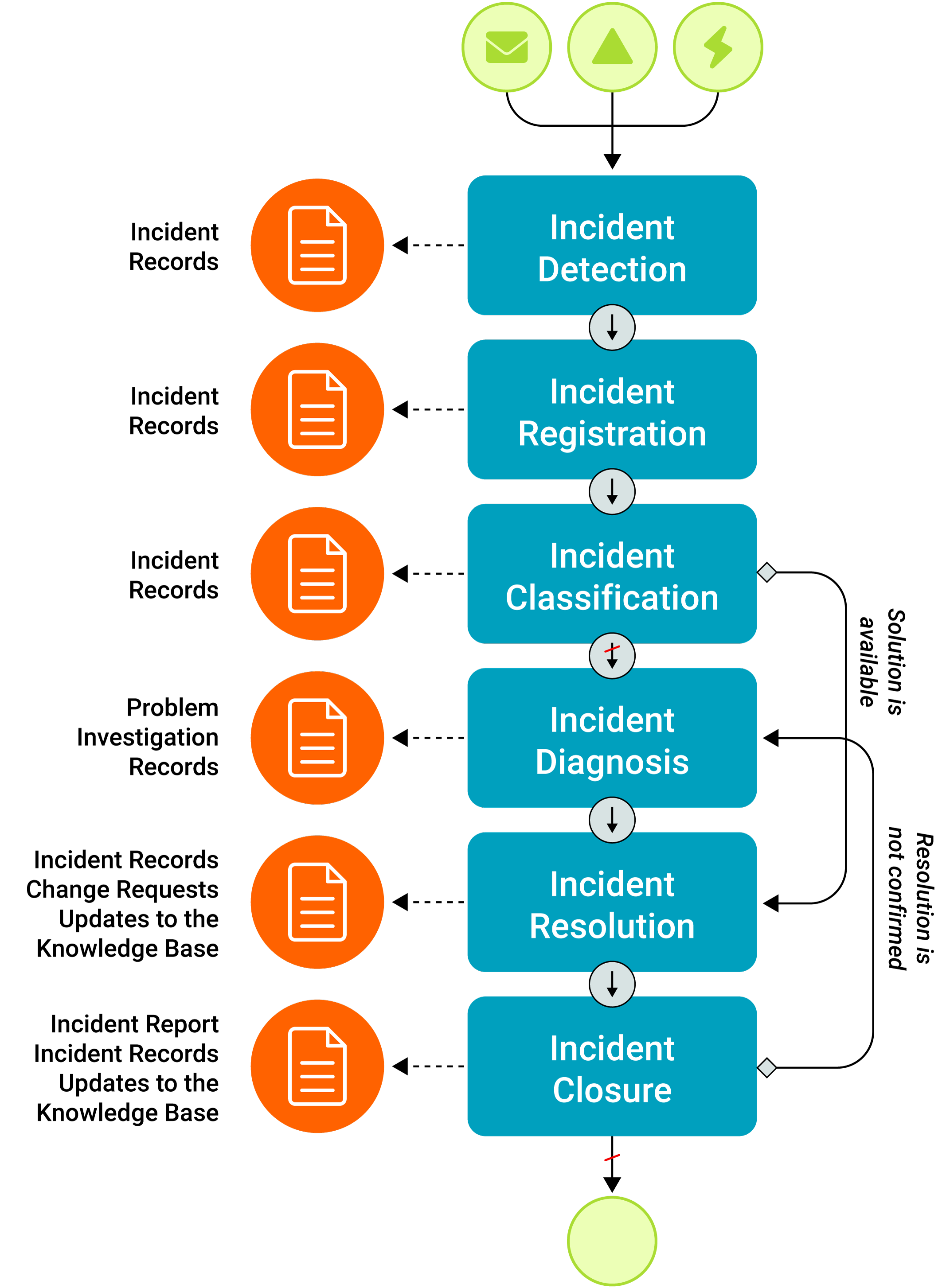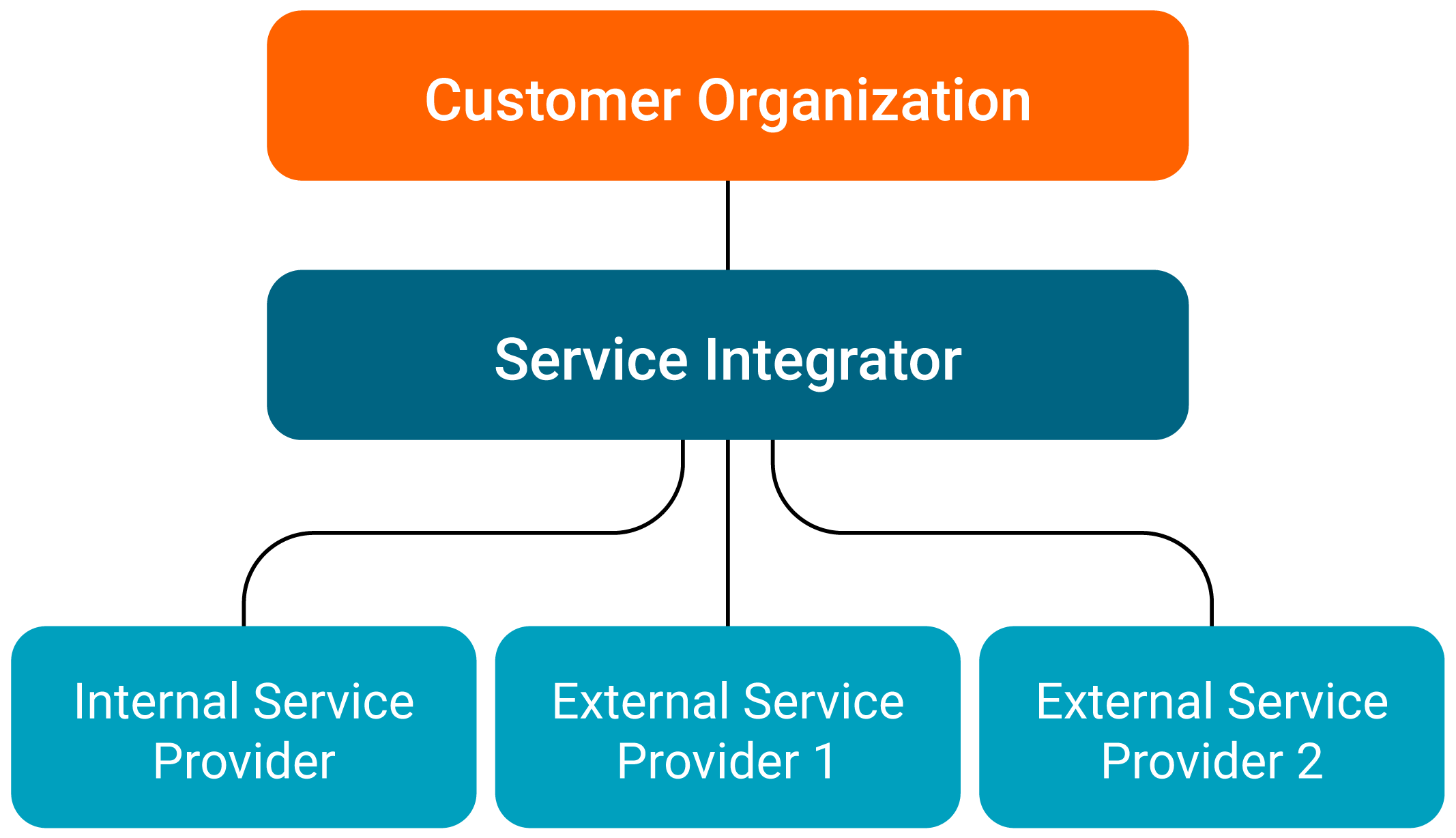Core Principles and Practical Application through ITSM Frameworks
Computing technologies play a significant role in both strategy and operations. Ensuring that IT services effectively serve organizational and user needs has become a critical concern. IT Service Management (ITSM) aims to establish the optimal approach for planning, developing, and supporting IT services within the enterprise.
ITSM frameworks were developed as best practices, standards, and approaches to managing the IT service lifecycle. They have become quintessential in providing much-needed structured guidance on how organizations can deliver quality IT services that provide business value at manageable costs and risks.
ITSM frameworks, such as ITIL, ISO 20000, COBIT, FitSM, and VeriSM, encompass all dimensions, including activities, roles, technology, and governance. This article explores the central concepts presented in these frameworks, examining how they interact with one another to fulfill business needs and user expectations. In the conclusion section, we introduce a new framework that includes the best aspects of existing frameworks.
Summary of key ITSM framework concepts
Concept | Description |
|---|---|
Principles | Universal ITSM recommendations that cut across all organizations, regardless of size or sector. |
Workflows | Interrelated ITSM activities whose execution results in the achievement of organizational service management objectives |
Teams | Capabilities, roles, responsibilities, and authorities required to implement ITSM principles and processes |
Tools | Technology, components, and information needed to execute ITSM activities |
Partners | Suppliers and third parties outside the organization who are involved in supporting ITSM activities |
Principles
Principles refer to statements of thought or belief that describe the required behaviors necessary to successfully adopt an ITSM framework. They are concise expressions that embody the core message of the framework and are applicable regardless of the organization’s context, like industry, size, or service delivery approach.
Principles justify the remaining elements. They help establish the right mindset and culture required for ITSM excellence.
ITIL principles
The ITIL framework, one of the oldest ITSM frameworks, introduced guiding principles during an update to its third version, as part of the ITIL v3 Practitioner course. In ITIL 4, these guiding principles were further refined and summarized into seven statements that support successful actions and informed decisions of all types at all levels. These universal and enduring principles are outlined as follows:
- Focus on value - Everything that the organization does needs to map, directly or indirectly, to value for the stakeholders.
- Start where you are - Do not start from scratch and build something new without considering what is already available to be leveraged.
- Progress iteratively with feedback - Organize work into smaller, manageable sections that can be executed and completed on time, incorporating feedback to ensure actions are focused and appropriate.
- Collaborate and promote visibility - Working together across boundaries produces results that have greater buy-in, increased relevance to objectives, and a higher likelihood of long-term success. Achieving objectives requires information, understanding, and trust.
- Think and work holistically - No service, or element used to provide a service, stands alone. Results are delivered by integrating all elements and should be coordinated to deliver value.
- Keep it simple and practical - If a process, service, action, or metric fails to provide value or produce a useful outcome, eliminate it.
- Optimize and automate - Eliminate anything that is truly wasteful and utilize technology to achieve its full potential.
The ITIL guiding principles apply to any initiative and all relationships with stakeholder groups. They can guide organizations in their work as they adopt a service management approach and adapt an ITSM framework to their specific needs and circumstances.
Other frameworks
Each organization can adapt its service management system to align with the principles of its chosen ITSM framework.
For example, the YASM framework outlines five simple principles of service management:
- The customer is king
- Vaguely defined services can't be managed
- If you stop improving, you will fall behind
- Don't leave customer support to luck
- Without a strategy, you cannot take the long view
Similarly, the VeriSM framework states that service management principles provide guardrails for products and services and are communicated within the organization through management's policies and values.
Workflows
At the heart of any ITSM framework are workflows that consist of activities transforming requirements into actual services, offering them to customers, and managing them to generate value.
The ISO 20000 standard defines a process as a set of interrelated or interacting activities that use inputs to deliver an intended result. Such processes are found in the operation sections of the service management system covering the planning, design, development, deployment, delivery, and support of IT services.
When establishing workflows, one must determine how the process flows in sequence and interaction by considering the inputs, outputs, interfaces, accountable roles, and metrics.
Most ITSM frameworks use similar terminology to describe processes within the IT service lifecycle. Examples of common ITSM framework processes include:
- Incident management: Manage the resolution of unplanned events that disrupt IT services within agreed service level targets.
- Service request management: Handle all pre-defined, user-initiated IT service requests in an effective and user-friendly manner.
- Change management: Control the modifications (including additions and removals) to IT services and their components to maintain stability.
- Service level management: Define, document, and agree on the required service level that meets customer needs, and ensure that those commitments are met.

ISO/IEC 20000-1:2018 Service Management System (source)
Within an ITSM framework, processes do not operate as standalone elements; instead, they are integrated into the organization’s service management approach. Examples include the ISO 20000 service management system and USM’s process model.
As IT service development evolved with technology, process-dominant thinking has given way to approaches focused more on speed than control, such as agile. In 2019, the ITIL 4 framework introduced the concept of practices that encapsulated processes within other resources under the four dimensions of service management. For example, the incident management practice includes two processes: incident handling and resolution, and periodic incident review.

ITIL 4 Incident handling and resolution process workflow (source)
ITIL 4 also introduced value streams, which incorporate multiple practices within a series of steps used by an organization to create and deliver products and services to its service consumers.
As organizations adopt and adapt processes within ITSM frameworks, one question that arises is where they stand in their implementation journey compared to international standards and best practices. Without formal guidance and the expectation to customize based on one’s context, it becomes a challenge to know exactly where a service provider is and where they ought to be.
ITSM process maturity models have provided visibility into this by enabling organizations to objectively and comprehensively assess their service management capabilities and identify areas that need improvement. Some maturity models, such as the ITIL maturity model, require engagement with accredited consultants at a fee, which can be expensive for some organizations.
A more feasible alternative is the SolarWinds ITSM Maturity Model, which aligns with five key ITSM areas and is freely accessible. It allows you to map common challenges a service provider faces with the current and future states of its ITSM practices, and get a reference model that can be used to chart an improvement roadmap.
Teams
Even in the age of automation and AI, people are still essential to ITSM frameworks. All the other elements are heavily dependent on the people involved in IT service management activities, who:
- Manage customer experience
- Share knowledge
- Communicate with users
- Navigate organizational change management.
The people aspects, like roles and responsibilities, organizational structures, culture, and competencies, all play a crucial role in determining the level of service management excellence.
Some of the common roles that are referenced in ITSM frameworks include:
- Service desk agent: This role acts as the first point of contact for users who require IT request fulfillment or issue resolution.
- Incident manager: This role coordinates multiple teams and vendors to resolve major IT incidents and also communicates with management and key stakeholders.
- Change manager: This role facilitates the planning, approval, scheduling, and communication regarding significant IT changes that involve cross-functional teams.
- Service delivery manager: This role manages the service lifecycle, overseeing the teams involved, tracking performance, and focusing on client relationships and satisfaction.
Relationship management
Relationship management with stakeholders is a key aspect of the people function. IT roles that interact directly with users of IT services, like gathering requirements or addressing requests and issues, require not only technical acumen but also business and behavioral competencies. Users can be especially challenging to deal with when services fail to meet expectations, as they directly impact the achievement of their organizational objectives. Having technical skills is not enough in such circumstances, and IT teams need to meet customer expectations, both through their words and their actions.
High emotional intelligence is particularly essential for effectively implementing ITSM frameworks, as it impacts leadership, management, team collaboration, and vendor management.
Training and development
When adopting an ITSM framework, it is crucial to equip the team involved with the right set of skills and competencies to handle the evolving context in which IT service providers operate. Regular training in both technical and business skills is vital in this regard, and organizational leadership must promote a culture of trust and transparency that allows ITSM teams to implement and improve their work practices based on service management best practices. The Skills for the Information Age (SFIA) is a useful reference for understanding the competencies required for different roles and levels, as defined by ITSM frameworks.
Tools
Within an ITSM framework, tools refer to the means by which IT services are delivered and managed. User devices, networking equipment, servers, applications, data centers, and cloud services are just part of a wide array of technologies that underpin business processes, products, and services. The deployment of technology in ITSM plays a crucial role in enabling innovation, cost management, expansion, compliance, and other strategic objectives that organizations aim to achieve.
Key technology systems that are emphasized within ITSM frameworks include:
Ticketing and workflow systems
These systems map ITSM process activities and information flow in a structured way, allowing for tracking of interactions between users and support teams, as well as managing the configuration and inventory of technology components.
Collaboration and communication tools
These tools make work visible and enable information flow between individuals and teams involved in ITSM processes. They are especially useful in the IT service development phase, while also being relied on during outages or service degradation to inform users and coordinate support teams.
Document repositories
These systems facilitate the storage and retrieval of valuable information across the IT service lifecycle. Knowledge bases provide easy-to-understand solutions for users (self-help) and support teams (installation and troubleshooting).
Monitoring and analytical tools
These tools query, report, and visualize the status of IT services and components, providing information on their availability and performance. They generate alerts that enable support teams to detect, understand, and react to issues in line with agreed service level targets.
AI in the ITSM sector has also been crucial in delivering some of the expected benefits from implementing ITSM frameworks. The capabilities delivered by AI solutions include predictive issue detection and resolution, proactive system tuning and maintenance, and enhanced automated chat with users.
Partners
All ITSM frameworks assume that service providers will depend on partners and third-party vendors to provide part of the IT services and components, as well as the associated support offered to users. These external parties can be involved in any activity within the service lifecycle, with most organizations involving them in the implementation and support of new IT systems as well as the provision of specialized services such as hosting, security, and connectivity. Most partner engagements involve formal contractual agreements that outline the terms of engagement, responsibilities, and options for conflict resolution.
While both partners and suppliers are involved in IT service provision, they differ in terms of their goals, with partners working closely with the IT service provider to achieve common objectives.
SIAM
For medium- to large-sized IT service providers, managing the complex sprawl of third-party suppliers can be a significant challenge. The level of complexity, especially with multiple interfaces and dependencies, can lead to conflicts and confusion, resulting in delays, cost overruns, and poor service quality.
Service Integration and Management (SIAM) methodology is a framework for integrated service management across multiple suppliers. It introduces the concept of a service integrator, a single, logical entity that sits between the service provider and its suppliers. The integrator is responsible for providing governance, management, integration, assurance, and coordination to ensure maximum value is derived from the engagement.

Figure 3: SIAM Ecosystem (source)
Partner selection
Several factors influence the selection of partners and vendors, including strategic focus, domain expertise, and resource scarcity. Partners must be evaluated based on established criteria, including their proven capability to provide the required services, compliance with relevant requirements, and cost-effectiveness.
After they are contracted, regular appraisals against defined performance targets should be carried out, and where opportunities for improvement are identified, they should be tracked for implementation. Some of the metrics that ITIL 4 recommends include SLA adherence and stakeholder satisfaction.
Last thoughts
The IT service management landscape has continued to evolve in response to changing business needs, technological advancements, regulatory concerns, and increasingly complex customer demands. While ITSM frameworks have reached some level of maturity, they will require regular updates to remain relevant in the face of these trends.
No matter where your organization stands on the maturity scale, SolarWinds can be the enabler to elevate your IT service delivery. Our platform blends sophisticated analytics, integrated change management, and powerful business service mapping directly, so that your IT efforts are precisely aligned with core business objectives.
Check our interactive ITSM maturity model to see where your enterprise stands and what you can do to improve your IT service delivery.


